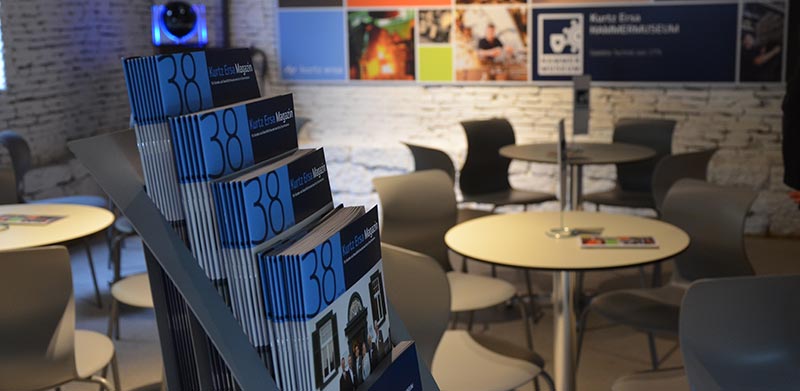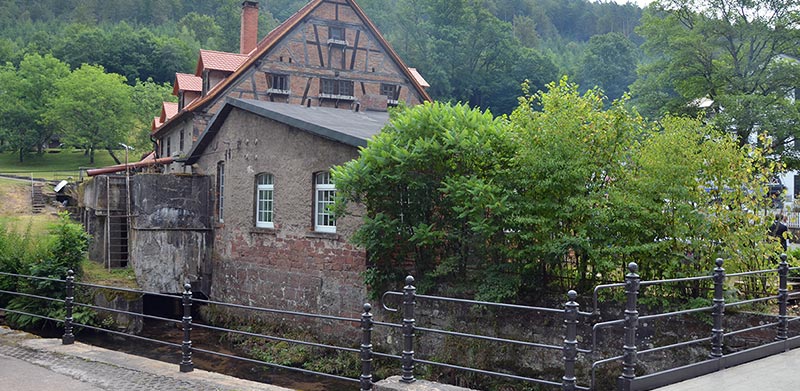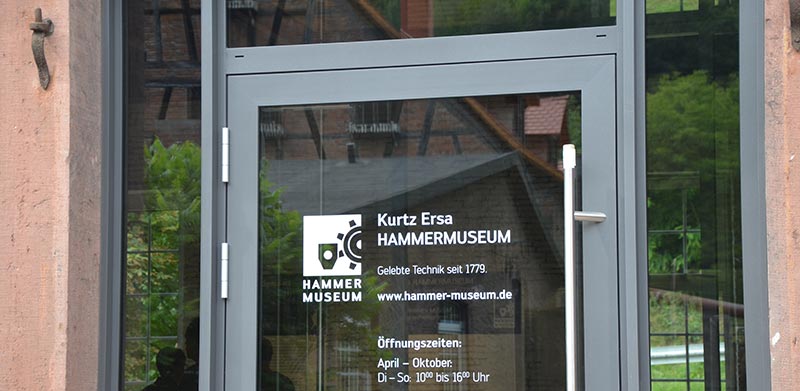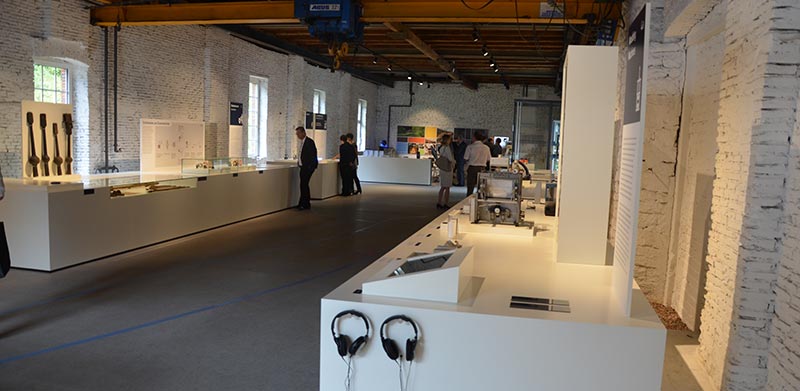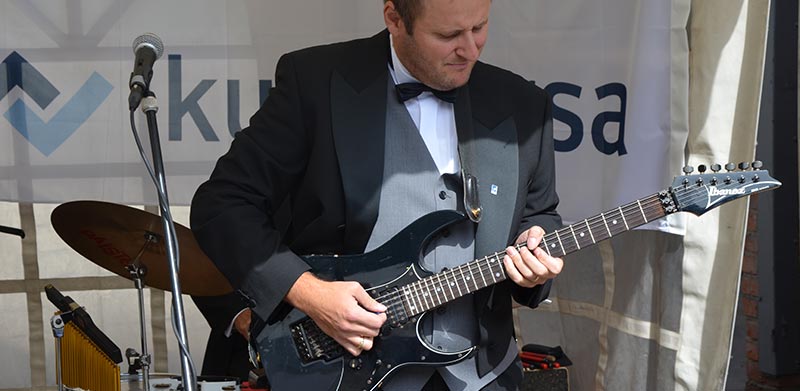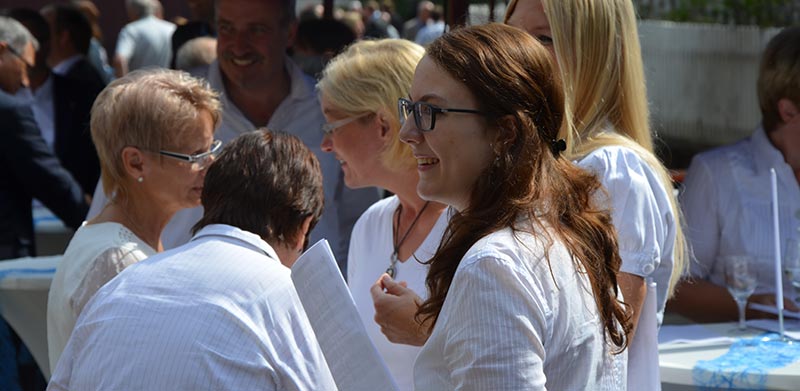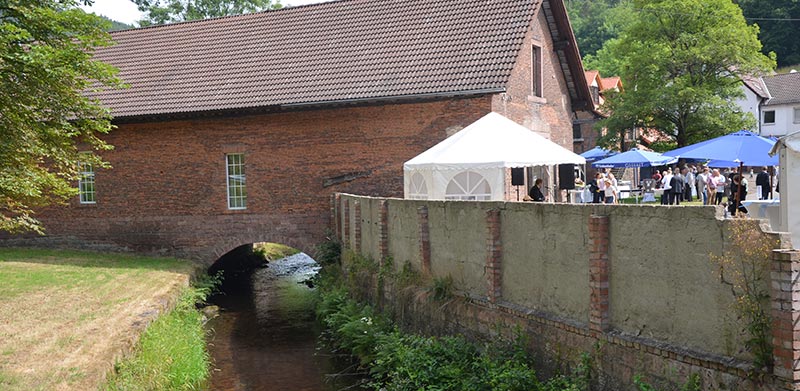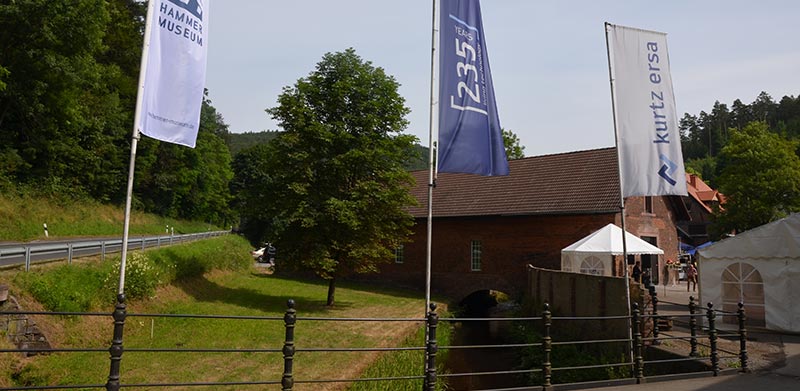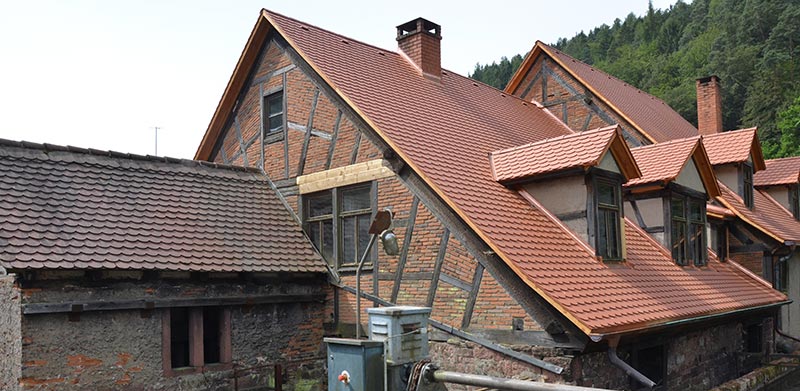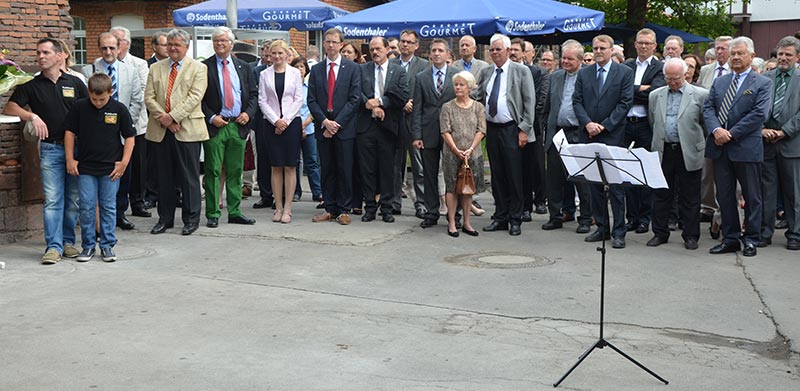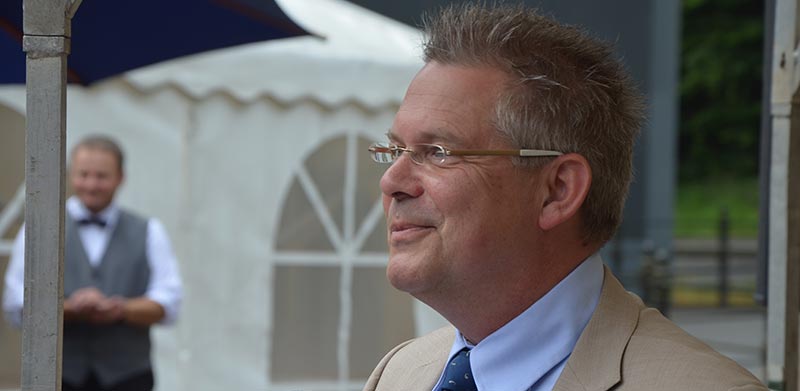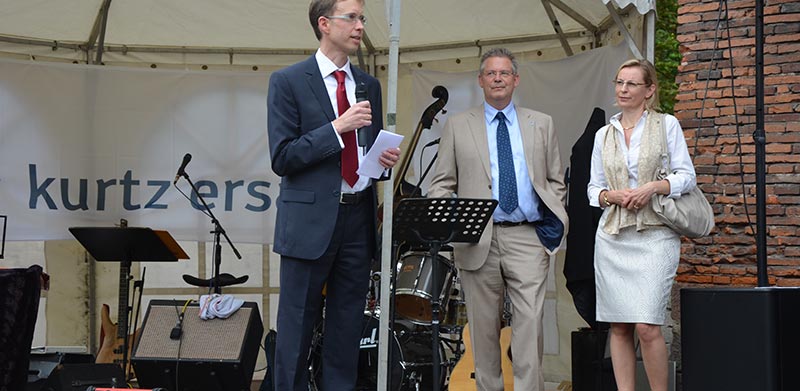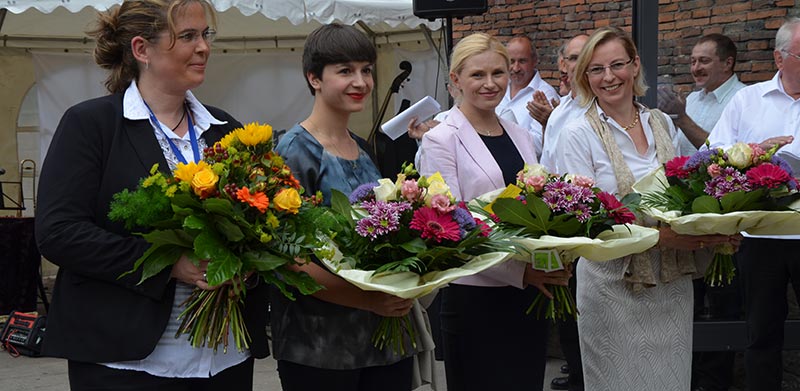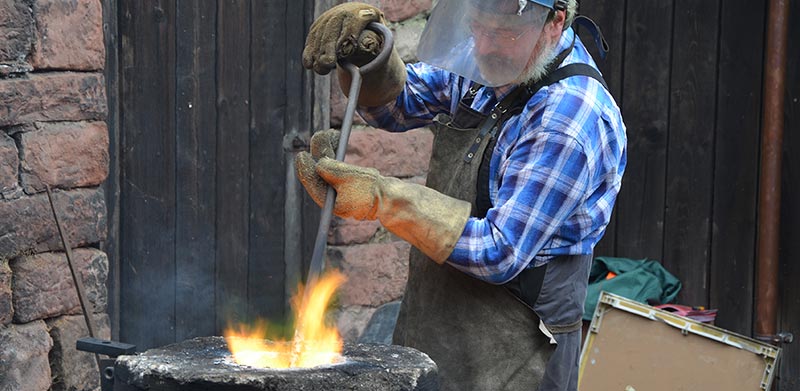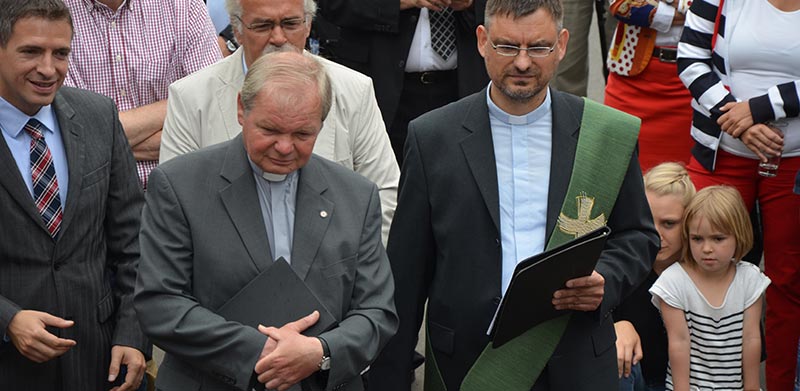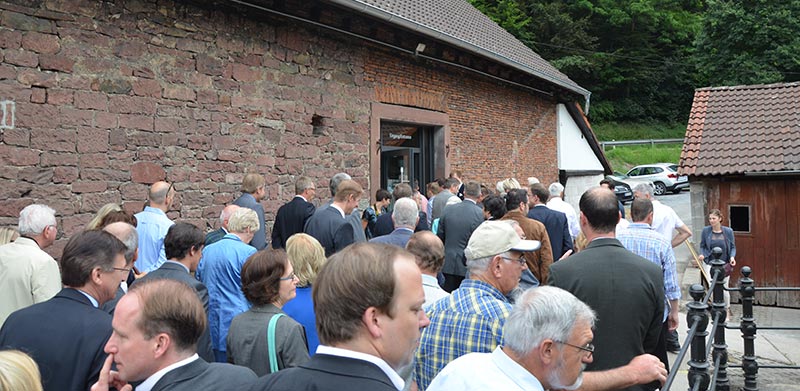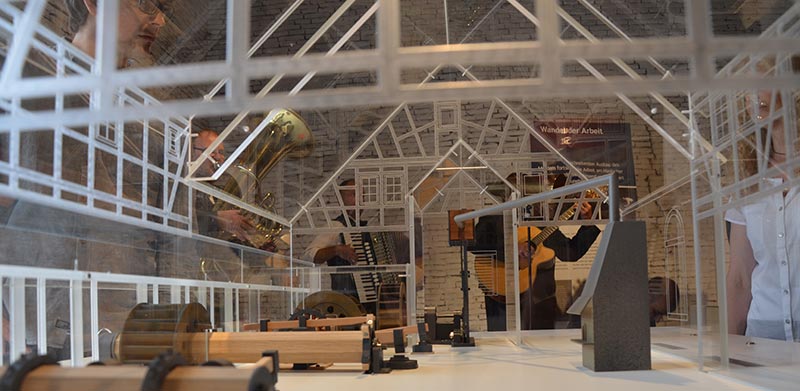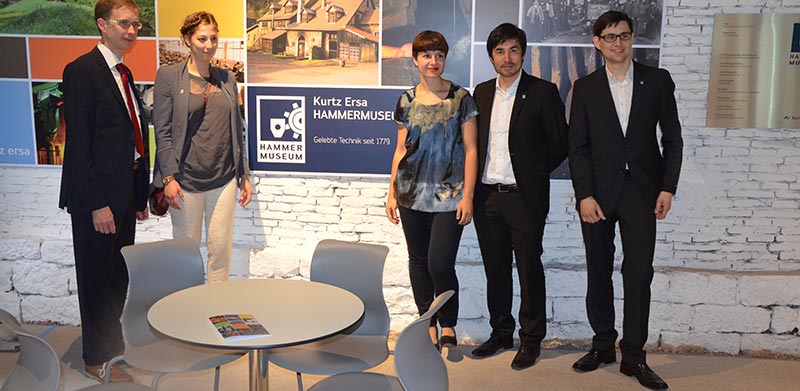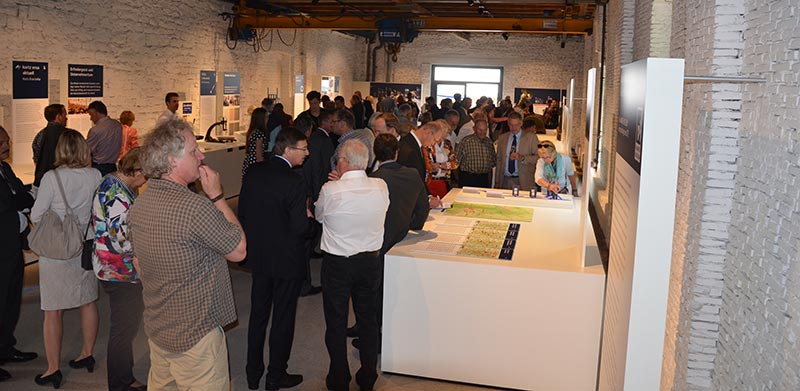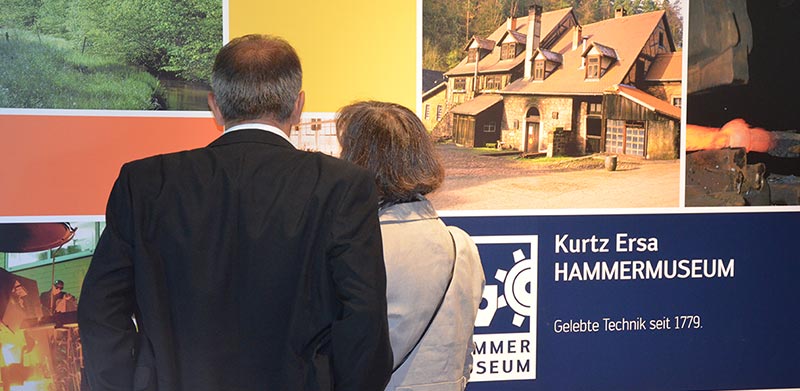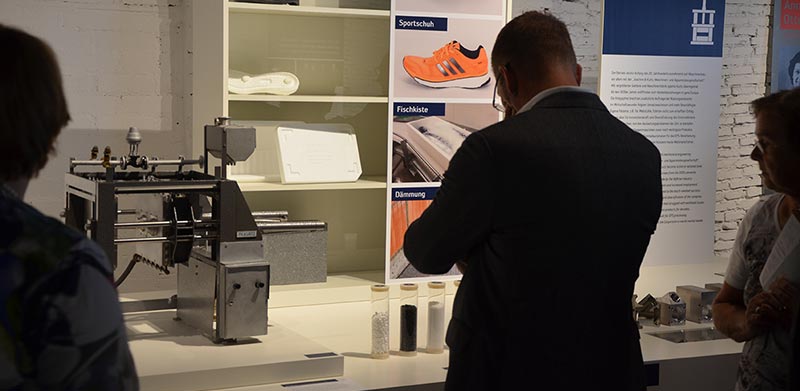Museum Opening
Kurtz Ersa inaugurates HAMMERMUSEUM in Hasloch
30 June 2014 On a beautiful and bright summer morning at the end of June, Kurtz Ersa inaugurated its HAMMERMUSEUM in Hasloch, the company's point of origin. Right there, on the grounds of the iron hammer, where the corporation has risen to become a global player, Kurtz Ersa presents its origin - while also offering a glimpse at its future in the 21st century.
Provenance of the corporation newly defined
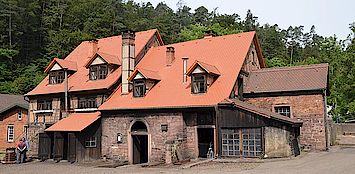
On the morning of June 28 even the weather cooperated, and Kurtz Ersa could inaugurate the HAMMERMUSEUM basked in bright sunshine, dedicating it to its future purpose. The restoration of this historical centre was associated with substantial costs. "This is something that is not provisioned for in the articles of association of Kurtz Holding as its object of business. Rather, it is based on a decision for which the 'return of investment' has not been looked at very closely. But one should not always in life attempt to weigh everything in dollars and cents," outlines Rainer Kurtz, CEO of Kurtz Ersa, speaking in his own as well as in the name of his brothers Walter and Bernhard in front of 300 invited guests, amongst them numerous business partners, advisory board members, the member of the state parliament, Mr. Thorsten Schwab, the Mayor, city and district councillors, family members and employees. Thilo Brodtman, Executive Vice-President of the VDMA (German Engineering Association) and Chief Executive Officer from 2015 on, came directly from China to take part in the inauguration. For 30 years now, the three brothers, representing the 6th generation, have successfully guided the family business. In the words of the Kurtz Ersa CEO, the inauguration of the museum in the anniversary year 2014, in which the corporation celebrates its 235th year of existence, marks "a highlight of our common work".
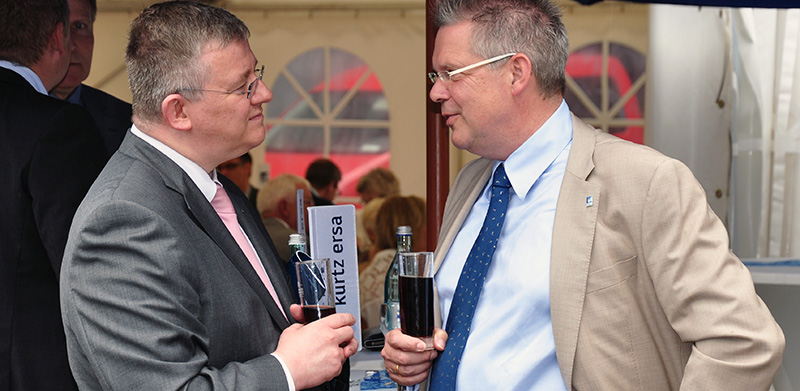
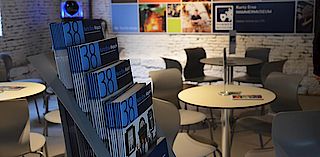
Residence of the Family since 1800
The iron hammer and the Kurtz family - this has been a deep and personal connection for a long time already. And it continues with the 6th generation whose members spent many hours playing on the grounds, catching fish in the passing creek and playing hide and seek in the forge, the carriage house and the coal shed during their childhood. The iron hammer grounds also include the manor house. It was built in 1834 and until two years ago home of Walter Kurtz and his family. But then the time had come to make visible the origin and to reposition the corporation for the future. "At the outset, we did not even know that something like a museum should come into existence", Rainer Kurtz said.
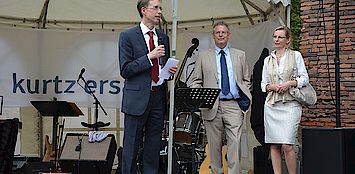
However, a few factual constraints had to be considered during the realization of the historical centre: The corporation needed additional meeting rooms. Both, the company archive and the Anna Göbel and Otto Kurtz Foundation needed a home. The historical iron hammer works had to be repaired again, after its last general refurbishment 35 years ago. And, last but not least, the history of Kurtz Ersa was to be be researched and made visible – in short: “A historical centre should be established for Kurtz Ersa Corporation reflecting the unique history of our company”, summarized the CEO of Kurtz Ersa. A complex task, the project team, who was specifically established for this task, approached with great enthusiasm. Prudently though, they also secured professional help from the outside: Such as the historian Dr. Robert Meier, who compiled the comprehensive company chronicles "From the Iron Hammer Works in Hasloch to Kurtz Ersa", or Dr. Andrea Schneider, who, with her immense experience as Managing Director of the Society for Companies’ History, shared her valuable advice and called for clear corrective measures when needed to bring the project back on course, or Dr. Thorsten Smidt of the expo2508 agency, who implemented the exhibition concept of the Iron Hammer Museum. At the end, a museum was created that represents much more than a museum - and whose major component was and still is the fully functional iron hammer works with its tail hammer and its tilt hammer. To the iron hammer works also inseparably belongs Armin Hock, who has kept, as lessee, the iron hammers going for the last 20 years, and who will continue with this activity in the future.
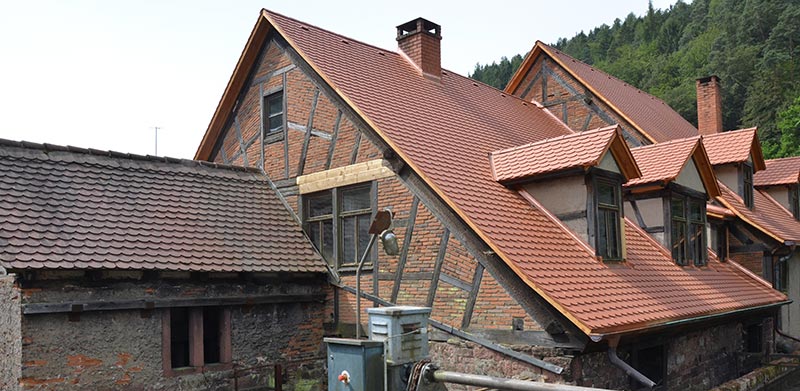
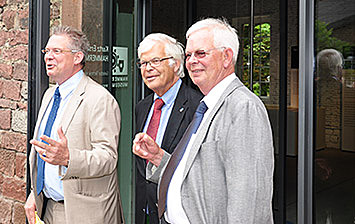
Iron Hammer shines in new splendour
During the last weeks, and under the direction of the architectural office Bannwarth, the building of the iron hammer works of 1779 was renovated and put in order. Thanks to the untiring efforts of many craftspeople the iron hammer works shone in new splendour for its inauguration: with a new roof, repaired hammers and a floor which can withstand the increased number of visitors. Concern was also given to the safety of the visitors, who will gain a fascinating insight into the 'glowing hot' Kurtz Ersa history in the iron hammer works and the museum. "From now on, Kurtz Ersa will present itself to our customers, employees, business partners and visitors with a distinctively new face. As a technology leader we need to prove over and over again on the world markets that our production technology offers advantages to our customers – for this future we have visualized our origin at this location", Rainer Kurtz states. Being a witness from times long passed, the last iron hammer works in the Spessart shows the visitor how the industry in the Spessart started, how Kurtz Ersa has grown into a globally acting corporation in the course of time, and by which innovative technologies its actual position will be strengthened and further expanded. The museum is also enthralling for young visitors: At numerous activity stations they will experience for themselves how technology works and how fascinating technical professions can be. Whether old or young, large or small, visitors can fortify themselves with food and drinks in the Museum Café and purchase high-quality HAMMER souvenirs to remember their visit - from miniature cast parts to magnets, writing utensils and the HAMMER WINE right up to 12-year-old single malt whiskey matured in wooden barrels.
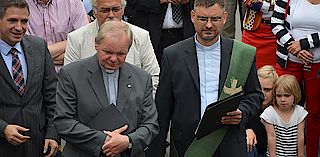
To return something to the region
With the establishment of the museum, Kurtz Ersa wants to show its appreciation and return something to the region, since the Spessart is an excellent location for an industrial company, where “very down-to earth, hardworking but also clever and resourceful people are living”. And anyway, the success of Kurtz Ersa is based on the dedication of its employees in the first place: Very often several generations of one family have been working for the company showing great commitment. After the bell founder Peter Glasbrenner had cast the Hammer Bell directly in front of the Iron Hammer, and the clergymen Thomas Pfeifer and Kurt Hyn had spoken their invocation and blessing, the three brothers Rainer, Walter and Bernhard Kurtz officially opened the HAMMERMUSEUM to the public. Over decades, uncountable bell-clappers were manufactured with the Iron Hammer and sent far and wide to be used in bells. In conclusion Rainer Kurtz promised: "The bell will not fall silent, even though the Iron Hammer Works has become a museum!"
Opening Hours Hammermuseum
March to October
Thu.-Sun. 11:00 to 16:00
November
Fri.-Sun. 11:00 to 16:00
ContaCt
Phone +49 9342 807 123
E-Mail: info(at)hammer-museum.de


